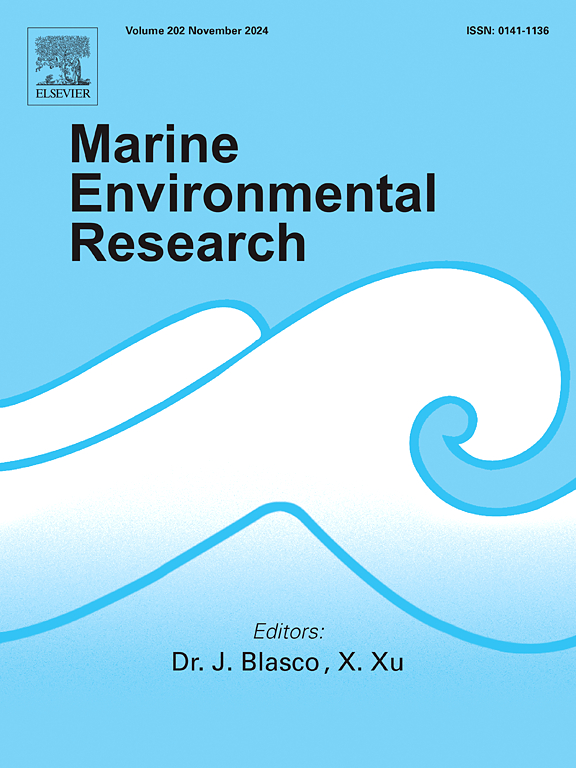Characterising tropical oyster reefs: invertebrate-environment associations and a newly documented reef building species
IF 3
3区 环境科学与生态学
Q2 ENVIRONMENTAL SCIENCES
引用次数: 0
Abstract
Oyster reefs were once widespread across the global tropics but have often been excluded from global assessments of historical distributions, declines and conservation needs. Consequently, little is known about tropical oyster reefs, including ecological function, which species are reef-building, structural characterisations of remnant reefs, associated biodiversity, and whether conservation actions are needed to ensure their recovery. We compared the characteristics of newly documented tropical oyster reefs across three Australian locations to gain a foundational understanding of their ecology. At each location, structural reef traits were assessed, and associated invertebrate communities were quantified taxonomically and functionally. Location had a strong effect on invertebrate communities, with reefs in Gladstone hosting a greater abundance, and larger, invertebrates, followed by Mapoon, and then Proserpine. Most invertebrates were positively associated with the lower intertidal zone and shelly sediment – we hypothesise that heat stress, interstitial reef spaces, and the proportion of habitat edges could be explanations for these observed patterns, however, further research is needed to confirm this. Reef-building oysters identified using molecular markers at all locations were predominantly Saccostrea lineage B, a species broadly distributed across tropical Australia and the Indo-Pacific. These characterisations provide novel insights into the ecology of tropical oyster reefs and baseline information to inform appropriate conservation strategies.
热带牡蛎礁的特征:无脊椎动物与环境的关系以及一种新记录的造礁物种
本文章由计算机程序翻译,如有差异,请以英文原文为准。
求助全文
约1分钟内获得全文
求助全文
来源期刊

Marine environmental research
环境科学-毒理学
CiteScore
5.90
自引率
3.00%
发文量
217
审稿时长
46 days
期刊介绍:
Marine Environmental Research publishes original research papers on chemical, physical, and biological interactions in the oceans and coastal waters. The journal serves as a forum for new information on biology, chemistry, and toxicology and syntheses that advance understanding of marine environmental processes.
Submission of multidisciplinary studies is encouraged. Studies that utilize experimental approaches to clarify the roles of anthropogenic and natural causes of changes in marine ecosystems are especially welcome, as are those studies that represent new developments of a theoretical or conceptual aspect of marine science. All papers published in this journal are reviewed by qualified peers prior to acceptance and publication. Examples of topics considered to be appropriate for the journal include, but are not limited to, the following:
– The extent, persistence, and consequences of change and the recovery from such change in natural marine systems
– The biochemical, physiological, and ecological consequences of contaminants to marine organisms and ecosystems
– The biogeochemistry of naturally occurring and anthropogenic substances
– Models that describe and predict the above processes
– Monitoring studies, to the extent that their results provide new information on functional processes
– Methodological papers describing improved quantitative techniques for the marine sciences.
 求助内容:
求助内容: 应助结果提醒方式:
应助结果提醒方式:


